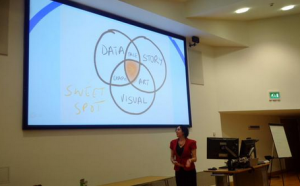Lots of people know about the Fusion Investment Fund (or FIF as it’s affectionately known!). Since 2012 we’ve awarded £2m spread across more than 200 projects. Here are a couple of facts that you might not know though…
Professional Services staff can apply for FIF too
FIF is open to professional services staff as well as academic staff. If you have a great idea which could change the way we work here at BU and move us towards our Fusion goals, then we want to hear from you!
What sort of ideas?
Well, in the past, FIF has supported these projects from Professional Services staff…
Under the Staff mobility and networking strand we have supplied funding for:
- Visiting US partners to conduct research about / promotion of Summer Schools
- My Community: Our Heritage workshops at the British Science Festival 2013
Under the Co-creation and co-production strand we have supported:
- BU Lego Challenge
- Sharing PAL: Students sharing their experiences of Peer Assisted Learning (PAL) to create collaboration, engagement and learning
- Global Skills: articulating international experiences in academic and professional contexts
Interested? Then do get in touch. See the links at the bottom of this post.
Erasmus for training
Did you know that our Erasmus funding is available for those who want to take training abroad as well as those who want to teach? Every year our academic staff visit European institutions to teach, exchange ideas and build their networks. What’s less well known is that staff (both academic and professional services staff) can apply for funding to go to a European Higher Education institution, or enterprise, to train, learn new techniques, share best practice and widen your horizons.
Erasmus provides up to €1,000 towards your travel and subsistence costs when travelling to another EU member country.
Priority will be given to staff who have not previously received funding from this strand so, if you’ve never considered it before, now might be your chance!
Want to find out more?
Well, hurry! Applications close this Friday at 12 noon. Visit the FIF website for further details and for information about how to apply. Sue Townrow, the FIF Co-ordinator, is available on both campuses this week so, if you’d like to meet, please get in touch. You can also contact us by email with any queries.
FIF – maybe it’s for you after all?!
 The project which has received Fusion Funding from BU aims to:
The project which has received Fusion Funding from BU aims to:

 Weathering the rain, the event kicked off with a reflective exercise called ‘Analogue Twitter.’ Participants were asked to write down a story of their research in 140 characters or less. From sports management to midwifery, research stories spanned the disciplines.
Weathering the rain, the event kicked off with a reflective exercise called ‘Analogue Twitter.’ Participants were asked to write down a story of their research in 140 characters or less. From sports management to midwifery, research stories spanned the disciplines.











 Fourth INRC Symposium: From Clinical Applications to Neuro-Inspired Computation
Fourth INRC Symposium: From Clinical Applications to Neuro-Inspired Computation Writing policy briefs
Writing policy briefs Upholding Excellence: The Concordat to Support Research Integrity
Upholding Excellence: The Concordat to Support Research Integrity Today’s Documentation Will Serve Tomorrow’s Justice
Today’s Documentation Will Serve Tomorrow’s Justice Up2U: New BU academic publication
Up2U: New BU academic publication ECR Funding Open Call: Research Culture & Community Grant – Application Deadline Friday 12 December
ECR Funding Open Call: Research Culture & Community Grant – Application Deadline Friday 12 December MSCA Postdoctoral Fellowships 2025 Call
MSCA Postdoctoral Fellowships 2025 Call ERC Advanced Grant 2025 Webinar
ERC Advanced Grant 2025 Webinar Horizon Europe Work Programme 2025 Published
Horizon Europe Work Programme 2025 Published Horizon Europe 2025 Work Programme pre-Published
Horizon Europe 2025 Work Programme pre-Published Update on UKRO services
Update on UKRO services European research project exploring use of ‘virtual twins’ to better manage metabolic associated fatty liver disease
European research project exploring use of ‘virtual twins’ to better manage metabolic associated fatty liver disease